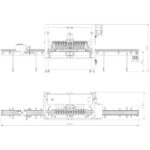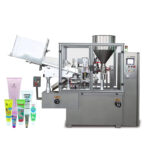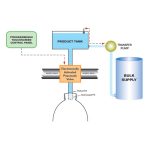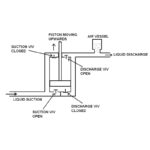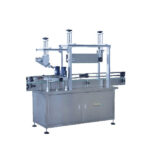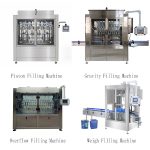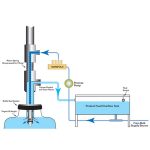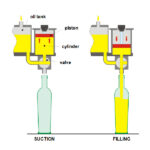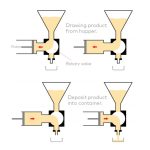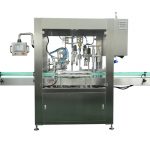A peristaltic pump is a type of positive displacement pump used for pumping a variety of fluids, they are also commonly known as roller pumps. The fluid is contained within a flexible tube fitted inside a circular pump casing (though linear peristaltic pumps have been made). A rotor with a number of "rollers", "shoes", "wipers", or "lobes" attached to the external circumference of the rotor compresses the flexible tube. As the rotor turns, the part of the tube under compression is pinched closed (or "occludes") thus forcing the fluid to be pumped to move through the tube. Additionally, as the tube opens to its natural state after the passing of the cam ("restitution" or "resilience") fluid flow is induced to the pump. This process is called peristalsis and is used in many biological systems such as the gastrointestinal tract. Typically, there will be two or more rollers, or wipers, occluding the tube, trapping between them a body of fluid. The body of fluid is then transported, at ambient pressure, toward the pump outlet. Peristaltic pumps may run continuously, or they may be indexed through partial revolutions to deliver smaller amounts of fluid.[Da Wiki]

Peristaltic pumps are a type of positive displacement pump used for pumping a variety of fluids. The fluid is contained within a flexible hose or tube fitted inside the pump casing. The actual pumping principle, called peristalsis, is based on alternating compression and relaxation of the hose or tube, drawing content in and propelling product away from the pump.

A rotating shoe or roller passes along the length of the hose or tube creating a temporary seal between the suction and discharge sides of the pump. As the pump’s rotor turns this sealing pressure moves along the tube or hose forcing product to move away from the pump and into the discharge line. Where the pressure has been released the hose or tube recovers creating a vacuum, which draws the product into the suction side of the pump, the priming mechanism.
Combining these suction and discharge principles results in a powerful self-priming positive displacement action.
Peristaltic Pump Filling Machine Principle
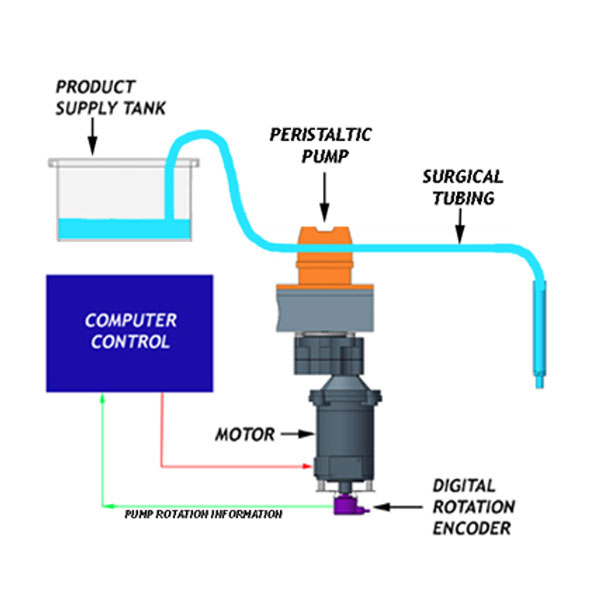
La pompa peristaltica effettua un contatto intermittente solo sulla parte esterna del tubo chirurgico (prodotto), in modo che il prodotto tocchi solo la parte interna del tubo. Il computer principale della riempitrice traccia in modo indipendente il numero di rotazioni della testa della pompa peristaltica (#) in modo da sapere con precisione la quantità di prodotto erogata. Una volta raggiunto il volume di riempimento desiderato, la pompa si arresta e il fluido rimanente non gocciola a causa dell'azione della pipetta. Il computer memorizza tutti i parametri di riempimento per cambi rapidi.
Applicazione:
Progettato specificamente per riempimenti di piccoli volumi di elevato valore con la massima precisione. Adatto per prodotti acquosi e altri prodotti a bassa viscosità.
Esempi:
Preparati farmaceutici, fragranze, oli essenziali, reagenti, inchiostri, coloranti e prodotti chimici speciali.
Vantaggi:
Il percorso del fluido è monouso; facile pulizia ed eliminazione dei problemi di contaminazione incrociata. Accuratezze di 0,51 TP3T sono ottenibili per volumi di riempimento inferiori a 1 ml.
VKPAK automatic peristaltic pump filling system is an easy to use table-top filling system. It’s suited for small volume fills involving light viscosity products. Its ease of use, quick change over, and no risk for cross contamination make it an ideal filling option for pharmaceutical preparations, perfumes, fragrances, reagents, essential oils, inks, dyes, thin paint, and various other specialty chemicals. This automatic peristaltic pump filling system can be easily be upgraded to as many as 24 channels to meet larger filling needs should they arise. A variety of tubing materials and sizes are available to match your specific product and budgets. Very inexpensive tubing can be used and then discarded, saving costly clean-up time, also, the system pumps most products directly from your bulk tank which eliminates transfer of product from one tank to another.
Riempimento: Bottle by oscillation tidy up the bottle opener for positioning disk thick, by positioning disk again intermittent drive to filling, stoppering, cover, screw cap. Solution by peristaltic pump suction by silicone pipe, at the filling station again by the needle can be moved up and down automatically filling liquid in the bottle.The needle every move up and down, to complete a filling.
Tappatura: Aggiungere nuovamente un buon tappo all'interno della bottiglia posizionando il disco inviato all'affisso, avvitare il tappo, applicare un principio simile e urinare in linea di principio, viene eseguito dal cilindro, coprendo varie dimensioni tramite i COPERCHI a vite completi e costantemente rotanti sotto e complessivamente su e giù, quando la bottiglia si ferma correttamente, il declino della rotazione intrappola la finitura del coperchio a vite del coperchio. Il corpo del tappo a vite adotta il design della coppia costante, in base al tappo della bottiglia e alla filettatura della bottiglia con torsione, per regolare la fermezza del tappo a vite dopo il posizionamento può scorrere automaticamente, raggiungere l'obiettivo di non ferire la copertura delle bottiglie.
